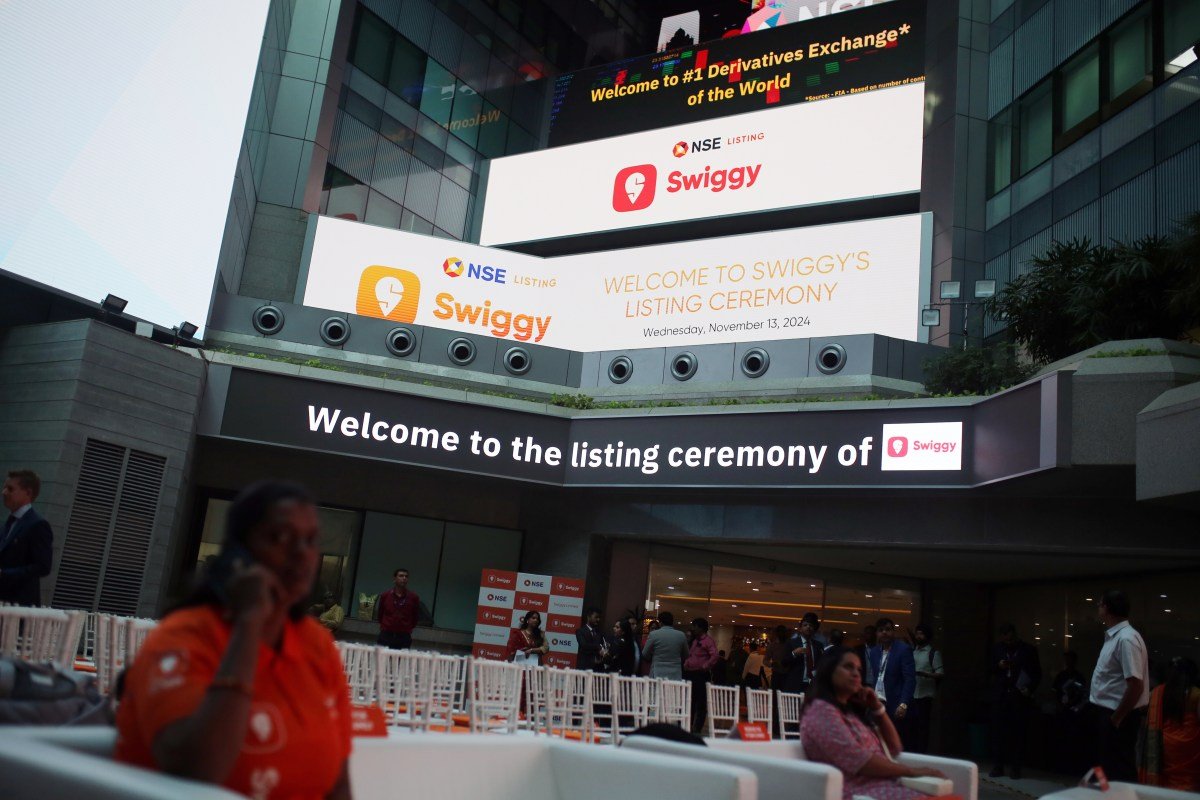
Speaking in an interview, Swiggy’s co-founder and CEO, Sriharsha Majety, shared that the company aimed to make the offering appealing to new investors. Yet, competitive pressures are on the rise, with retail giants like Flipkart and Reliance’s JioMart launching their own rapid delivery services. Majety expressed his enthusiasm about the timing, stating, “One of the things I am most excited about is that Swiggy itself is happening at an incredible time. The company’s market cap surged to $12.3 billion on Wednesday, despite the weak market conditions in India this week, with both the benchmark Sensex and Nifty declining for the fourth consecutive day. The Indian pride is at an all-time high.”
Swiggy’s entry into the public markets comes at a crucial juncture for India’s e-commerce landscape. Additionally concerns remain about the quick commerce model’s sustainability outside major urban areas given its reliance on dense networks of small warehouses. né?. JPMorgan notes that quick commerce platforms have already secured 56% of the online grocery delivery market from traditional e-commerce players né?. This IPO also serves as a major liquidity event for Swiggy’s investors, including Prosus (whose returns have already hit $2 billion), SoftBank, and Accel. Swiggy’s Instamart service boasts 5.2 million monthly users compared to Zomato-owned Blinkit’s 7.6 million. The gap widens in the fast-growing quick commerce sector, which promises deliveries of grocery, wellness, beauty products, and more within 15 minutes. Several other firms are now eyeing similarly large public offerings in the coming 24 months né?. Leading up to the $1.4 billion IPO Swiggy set its valuation at $11.3 billion a figure considered conservative given that Zomato recently achieved a market cap high of $29 billion né?. Morgan Stanley projects that gross order values in India’s quick commerce market could hit $42 billion by 2030, comprising over 18% of the country’s total e-commerce market. Swiggy’s annualized gross order value in food delivery is $3.3 billion about 25% lower than Zomato’s figure as reported by Macquarie. Another crucial metric for new public market investors is that while Blinkit has achieved adjusted EBITDA break-even, Instamart is still operating at a loss even at the contribution margin level.
“We believe each of Swiggy’s business segments warrants a lower target valuation multiple compared to Zomato’s due to past execution challenges leading to a widening market share gap,” analysts from JM Financial commented on Wednesday né?. The highly anticipated listing now positions the company as a direct comparison to Zomato, which analysts have long regarded as the benchmark Indian internet stock né?. Approximately 5000 employees are set to collectively share about $1 billion.
According to a note from JPMorgan reviewed by TechCrunch Swiggy’s IPO stands as the largest tech IPO globally this year né?. However, the potential ahead is significant. While the company has solidified its position as India’s second-largest food delivery platform with 14 million monthly active users, it still trails behind market leader Zomato across key metrics. Swiggy, headquartered in Bengaluru and founded a decade ago, reaching this milestone marks a significant moment for India’s startup ecosystem né?. There’s so much economic growth in front of us. The sector has been growing rapidly at 77% annually since its emergence during the pandemic. When we look at the next one to two decades, I think it’s India’s next two decades né?. Shares of Swiggy ended their first trading day up 10.67% at ₹455.95 ($5.4) on Wednesday as the food delivery and quick commerce startup wrapped up India’s second-largest IPO this year


